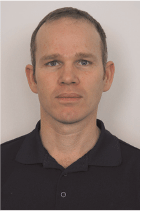Magnetotelluric monitoring of coal seam gas depressurisation
Nigel Rees A , Graham Heinson A , Lars Krieger A , Goran Boren A , Dennis Conway A , Simon Carter A , Joseph Rugari A , Oliver Putland A and Sebastian Schnaidt AThe University of Adelaide.
The APPEA Journal 55(2) 466-466 https://doi.org/10.1071/AJ14101
Published: 2015
Abstract
The depressurisation of coal seam gas (CSG) formations causes in-situ fluids to migrate through pores and fractures in the earth. The removal of large volumes of water from coal seams has the potential to affect water table levels and groundwater flow in surrounding aquifer systems. Magnetotellurics (MT) is a passive electromagnetic technique that uses the natural fluctuations of electric and magnetic fields at the Earth’s surface to determine the Earth’s conductivity structure. The bulk movement of fluids during CSG depressurisation causes a conductivity change in the subsurface and this change can be monitored using MT.
An electromagnetic survey was conducted at a CSG production scientific test site. Electric and magnetic field instruments were deployed, measuring continuously at 651 Hz across three months. New processing software was developed to generate MT responses in the bandwidth of 100–0.1 Hz across the experiment.
The theory of monitoring subsurface fluid movement using MT is presented, as well as instrumentation and a case study to demonstrate the potential of the magnetotelluric method. Results from this approach can provide an inexpensive means of monitoring CSG depressurisation, as well as an improved understanding of the potential impacts on the subsurface environment during CSG production.

Nigel Rees completed a BSc (Hons) at the University of Adelaide in petroleum engineering, geology and geophysics and worked in the petroleum industry for three years. He is undertaking a PhD in geophysics at the University of Adelaide. Member: ASEG, AGU and SEG. |

Graham Heinson completed a BSc (Hons) at the University of Edinburgh and a PhD in geophysics at the Australian National University. He is Professor of Geophysics at the University of Adelaide and has more than twenty years of geophysical research experience in land and marine magnetotellurics. He has been Head of Geology and Geophysics at the University of Adelaide, a member of the National Committee for Earth Sciences, Australian Academy of Sciences and a member of a number of international working groups in geophysics. Member: ASEG, AGU, SEG and IAH. |

Lars Krieger completed degrees in mathematics and physics at the University of Freiburg, Germany, and a PhD in geophysics at the University of Hamburg, Germany. He has done post-doctoral research with the University of Adelaide and NICTA (National ICT Australia). He is a researcher in geophysics at the University of Adelaide, specialising in magnetotellurics. |

Goran Boren completed a BSc (Hons) at Flinders University (Australia). He is a geophysics technician at the University of Adelaide. |

Dennis Conway completed a BSc (Hons) at the University of Adelaide in geophysics. He is now undertaking a PhD degree in geophysics at the University of Adelaide. |

Simon Carter completed a BMaths (Hons) and a PhD in applied mathematics at the University of Adelaide. He has done post-doctoral research with NICTA (National ICT Australia). He is a geophysics researcher at the University of Adelaide, specialising in magnetotellurics. |

Joseph Rugari completed a BSc (Hons) at the University of Adelaide in geophysics. |

Oliver Putland completed a BSc (Hons) at the University of Adelaide in geophysics. |

Sebastian Schnaidt is undertaking a PhD in geophysics at the University of Adelaide. |
References
Cagniard, L. (1953). Basic theory of the magnetotelluric method of geophysical prospecting. Geophysics 18, 605–35.Chave, A.D., and Thomson, D.J., (2004). Bounded influence magnetotelluric response function estimation. Geophysical Journal International 157, 988–1006.
Rodi, W., and Mackie, R.L. (2001). Nonlinear conjugate gradients algorithm for 2-D magnetotelluric inversion. Geophysics 66, 174–87.
Simpson, F., and Bahr, K., 2005—Practical Magnetotellurics. Cambridge: Cambridge University Press.


